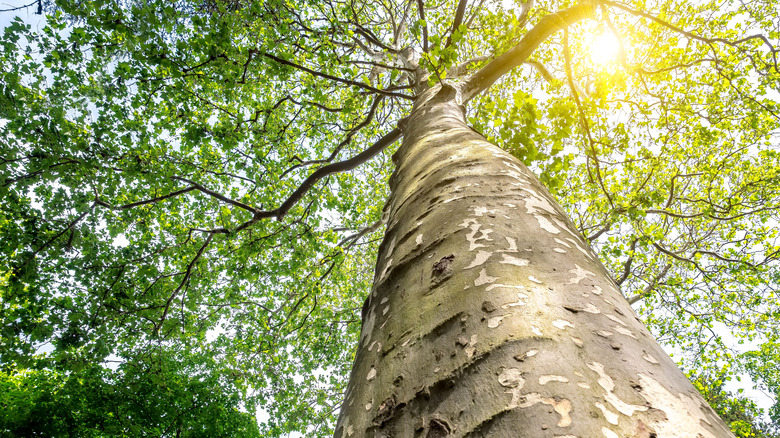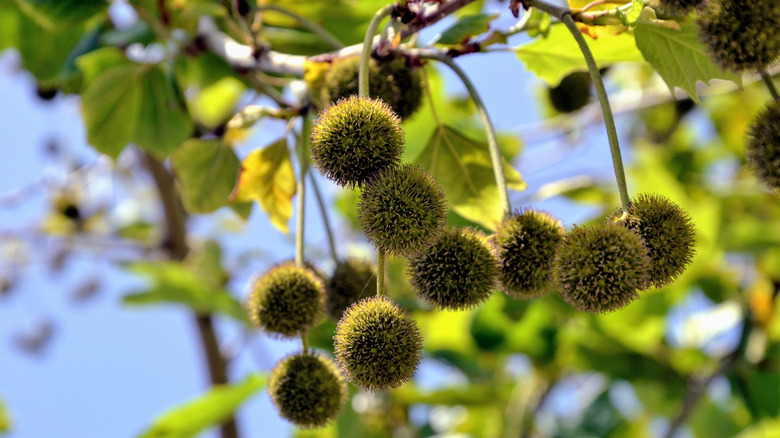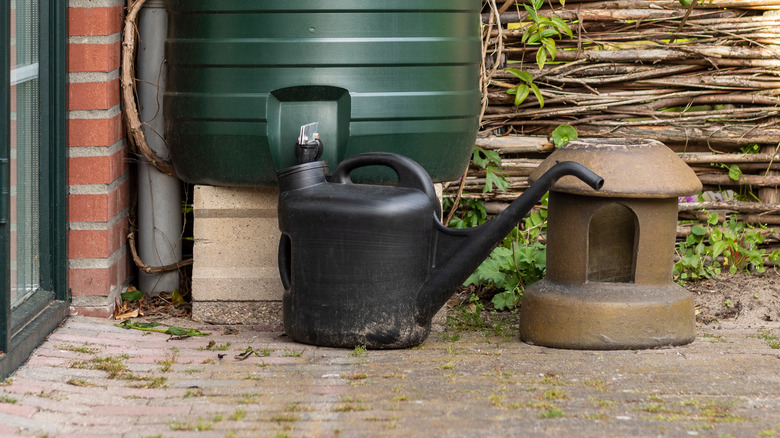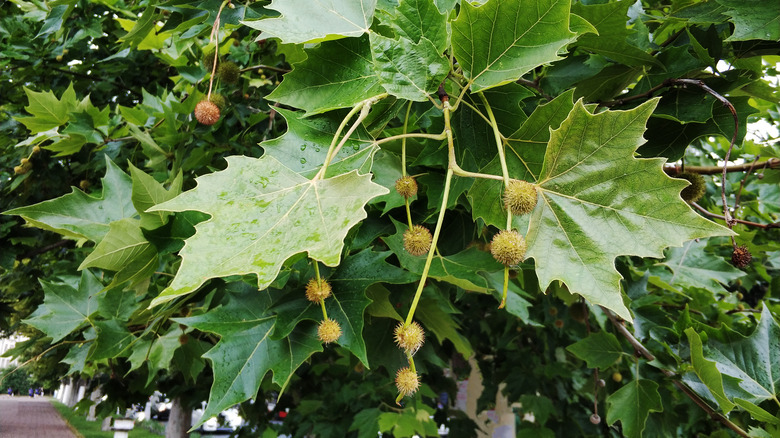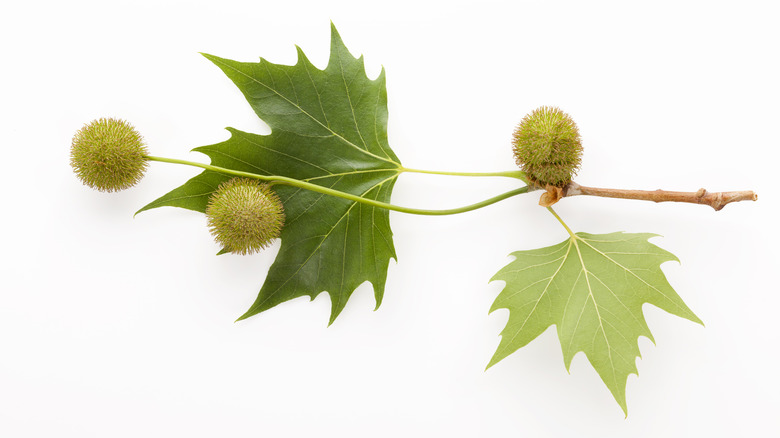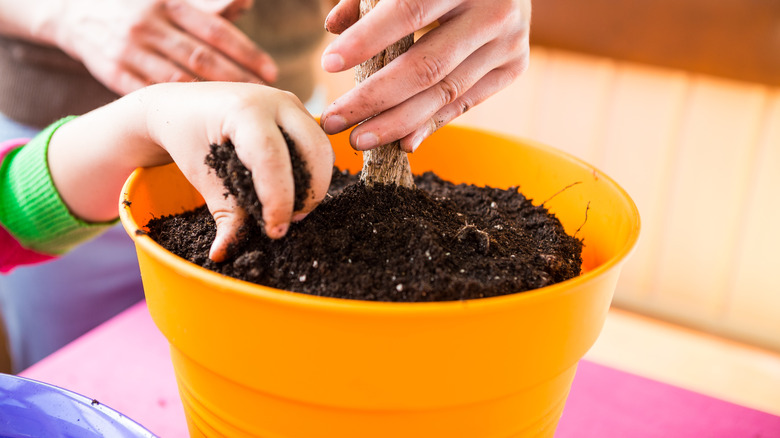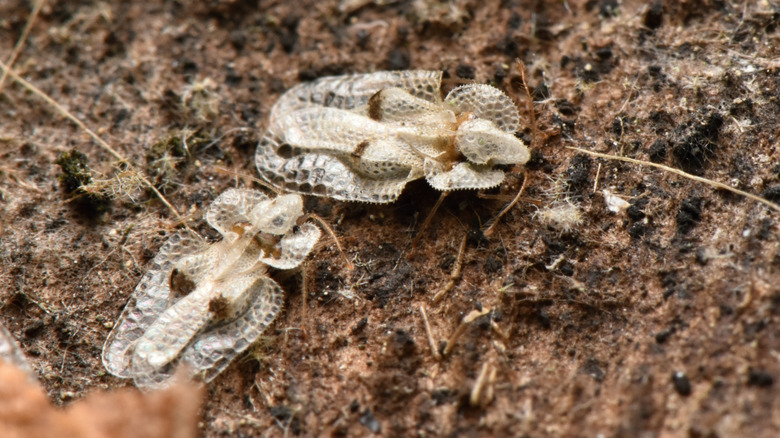How To Successfully Grow Sycamore Trees
The sycamore tree, also known as Plantanus occidentalis, has been a staple part of American forests for centuries. The Native Americans praised the sycamore tree for everything it provided for them. Dave's Garden states that medicine was commonly made from the flaky bark of this magnificent tree. Other parts of the tree were also used as treatments for wounds, cuts, or rashes. Hollowed out portions of its long, straight trunk made the perfect canoes, and the sap could even be used to make a sweet-tasting drink.
These trees are mainly found in the eastern and central parts of the United States but have the durability to grow nearly anywhere. Sycamore trees are commonly found in urban parks and landscapes due to their strong, durable structure and lush foliage that provides the perfect amount of shade. They can be easily identified by their flaky reddish-brown bark and leaves that closely resemble a maple leaf, with three to five lobes per serrated leaf. Their seeds hang from the tree in spiky ornaments and fall in the spring for a natural and straightforward germination process. These trees grow to massive sizes, reaching 100 to 130 feet tall, according to Leafy Place. If you are looking to grow one of these spectacular trees for yourself, it is a relatively easy and quick process. Here's how to get started.
How to use a sycamore tree in your garden
Especially for suburban homes with plenty of yard space, a sycamore tree can be an impressive and useful addition to your property. In a front yard with plenty of open and empty space, the tree can fill up your space and add to the curb appeal of your home. In a backyard or garden environment, it can provide the perfect amount of shade for a small sitting area or even act as a base for building structures. For example, for homes with families, sycamore trees can be the perfect base for a treehouse or a tree swing, per Treehouse Pros.
However, sycamore trees tend to grow rather large after long periods of time; therefore, you should be mindful of the position in which you plant your tree. Arbor Day Foundation suggests planting your tree at least 15 feet away from your home or any important structures on your property. Planting sycamore trees too close to other structures could result in declining health for the tree as it grows and possibly expensive damage to your home from growing tree roots and branches.
How to grow a sycamore tree
When it comes to growing a sycamore tree, the process is very natural and easy. For the best results, follow the tree's natural process by planting the seed in the spring, when seed balls fall from the tree. The seeds don't need any preparation; therefore, you simply place the seeds about 1/8 inch deep into a shallow seed starting tray filled with regular potting soil. Ensure that when you place the seeds into the tray, they are 6 to 8 inches apart, giving each seed plenty of space to germinate. Keep the tray moist and located in indirect sunlight as the germination process begins, explains Treehugger.
It takes about two months for the sycamore seeds to develop into seedlings. Once the seeds have grown into small plants, transfer each plant to its own pot with fresh soil. Within a year of germination, the plants should be ready to take a permanent position outside. If desired, you can also keep the tree growing in the pot for several years before repotting or planting outside.
How to care for a sycamore tree
Sycamore trees grow naturally and easily, making them a very easy plant to care for. They can grow in nearly any soil type but grow best in rich soil. The soil should be moist but still well-draining to keep the soil from becoming soggy. Gardening Know How discusses that adult sycamore trees are good at withstanding moderately dry conditions but should receive a thorough watering if it's been a while since a good amount of rain swept over the area. A young tree, however, needs to be watered more frequently. Ensure young sycamore trees remain in moist soil for their continued healthy growth and development.
Sycamore trees are known for being fast-growing trees as they quickly transform into their magnificent, full foliage adult figures. If your tree isn't growing or lacks color and thickness in its leaves, you may want to consider using fertilizer. Although fertilizer can improve the growth and health of your plant, it can also cause minor issues. When using fertilizer, only do so every other year to avoid the damages that could result from its overuse.
Sycamore tree varieties
Leafy Place states that there are about six different species of sycamore trees that fall into three main types, including American, Mexican, and California sycamore trees.
- American sycamore trees (Platanus occidentalis) are the most common variety of sycamore trees in the United States. They are typically seen growing in USDA growing zones 4-9, where the soil is moist and well-draining. They also grow the tallest compared to other species of sycamore trees, averaging between 100 and 131 feet tall.
- Mexican sycamore trees (Platanus mexicana) are much smaller than other varieties of sycamore trees, ranging between 40 and 50 feet tall. This species of sycamore tree tolerates warmer and dryer environments much better than other varieties and can be identified by their distinctive glossy, dark green leaves.
- California sycamore trees (Platanus racemosa) can grow up to 110 feet tall and are very similar to American sycamore trees. However, they grow along the west coast of the United States rather than the east coast. They are also drought tolerant and can be distinctly identified by their fluffy seed ornaments that drop from the tree in the spring.
Are sycamore trees toxic?
As mentioned before, the sycamore tree was used for many medicines and remedies by Native Americans. Although consumption and use of the bark and leaves can be beneficial to the health of the human body, the seeds and their enclosures have the opposite effect on certain animals. Wag! states that when the seed ornaments that hang from the sycamore tree drop to the ground, horses are put at significant risk for sycamore poisoning. The toxic agent inside the seeds is called hypoglycin A, which can quickly cause damage to the horse's muscles by breaking down the cells. The seeds can have a similar effect on household pets, as well.
Although consuming the sycamore tree may not be harmful to humans, TreeInspection.com explains that the tree can cause respiratory irritation. During the summer, dust develops under the tree's leaves, which causes people to cough, sneeze, and in severe cases, even vomit. The tree's effects on your respiratory system depends on your tolerance to the dust.
How to repot a sycamore tree
When germinating your own sycamore tree, you might decide to keep your tree growing in a pot for a bit longer before planting it outside in a permanent environment. In this case, you may need to repot your tree when it has grown a considerable amount. First, loosen the roots before sliding the tree out of the pot. This can be done by running a knife around the inside edge of the pot. Once the tree is out of the pot, gently loosen the root ball with a small rake or your hands, per Stark Bro's.
Then add a layer of fresh potting soil to the bottom of a new, larger pot. Place the tree in the center of the new pot and fill in the edges with more fresh potting soil. Pat down the new soil tightly to ensure the tree is firmly set in place. Finally, finish off by watering your plant and keeping the plant moist as it continues to grow and recover from the transition.
Common problems
Even though sycamore trees are easy to grow and maintain, they are still susceptible to pests and diseases. According to Gardening Know How one of the most common pests that significantly affect the sycamore tree is the sycamore lace bug. These pests can be identified by the lacy patterns on their wings, chest, and back. Although these pests will not kill or seriously damage the tree, they feed on the underside of its leaves, affecting the tree's healthy growth. To prevent and clear your tree of these pests, simply hose the tree down where you spot the pests or use pesticides that best fit the situation.
Sycamore trees have a way of warding off diseases, but anthracnose is still common and can harshly affect sycamore trees, sometimes even killing certain species, like the American sycamore tree. The disease starts by killing the twig tips of the tree and slowly spreading inward towards the trunk. These diseases most commonly arise in cool and wet weather and can easily be prevented by providing your tree with adequate water and fertilizer.
To protect your tree from common problems, like the ones mentioned here, Gardening Know How suggests always keeping your tree in good health and the right conditions. Healthy trees can ward off harmful problems much better than weak and unhealthy trees.
